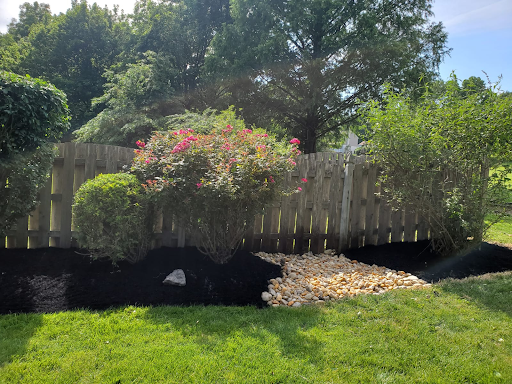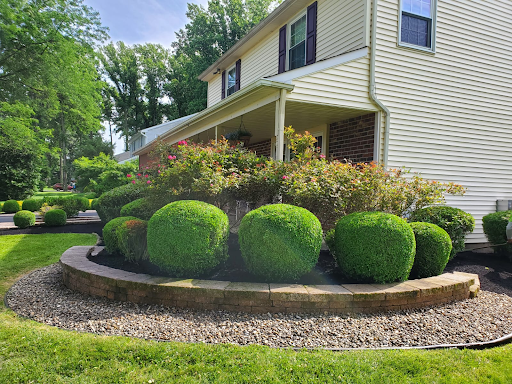In the enchanting embrace of autumn, nature unfurls its most breathtaking masterpiece — the kaleidoscope of fall foliage. As the leaves transform into a captivating symphony of colors, our guide unveils a curated selection of the 15 best trees and shrubs that promise to paint your landscape with the hues of the season. Prepare to be captivated by the vibrant reds, oranges, and yellows that adorn these botanical wonders. Whether you’re an avid gardener or simply a lover of nature’s artistry, our comprehensive list will guide you in creating an awe-inspiring autumn display that rivals the canvas of any masterpiece.
1. Maple Trees: A Fiery Display of Elegance
2. Oak Trees: Majestic Shades of Rustic Splendor
3. Dogwood Shrubs: A Delicate Palette of Pinks and Reds
4. Sweetgum Trees: Nature’s Marquee of Multicolored Stars
5. Witch Hazel Shrubs: A Burst of Golden Brilliance
6. Ginkgo Biloba Trees: Ancient Elegance in Gold
7. Redbud Trees: Pink Clouds Adrift in Fall Skies
8. Burning Bush Shrubs: Fiery Accents of Intense Red
9. Serviceberry Trees: A Symphony of Orange and Red
10. Witch Alder Shrubs: Intimate Elegance in Crimson
1. Maple Trees: A Fiery Display of Elegance

Maple trees stand as unrivaled ambassadors of fall’s vibrant beauty. With their distinctive palmate leaves, these trees offer a rich spectrum of colors, from deep burgundies to radiant oranges. The Sugar Maple (Acer saccharum) and the Japanese Maple (Acer palmatum) varieties are particularly celebrated for their stunning autumn foliage.
In the enchanting embrace of autumn, nature unfurls its grand tapestry of colors, and among the most esteemed artists in this seasonal symphony are the majestic maple trees. With their elegant palmate leaves and a breathtaking array of fiery hues, these trees command attention and evoke a sense of wonder. From the deepest burgundies to the most radiant oranges, maples transform the landscape into a canvas of unparalleled elegance and beauty, making them a cherished hallmark of fall.
Maple trees belong to the genus Acer, a diverse family that encompasses a wide range of species and cultivars. These arboreal wonders are renowned for their distinct leaves, typically featuring five or more lobes that resemble an open hand, hence the term “palmate.” This unique foliage is a masterpiece of nature’s design, offering ample surface area for the production of chlorophyll, the green pigment responsible for photosynthesis. But as the days grow shorter and temperatures drop, the chlorophyll production slows down, unveiling the hidden palette of pigments that had been masked by green.
The transformation of maple leaves into a kaleidoscope of colors is a mesmerizing phenomenon. As autumn approaches, these deciduous trees begin to reabsorb nutrients from their leaves, causing the chlorophyll to break down and the green color to fade. This process reveals other pigments that had been present all along, such as carotenoids, which manifest as vivid yellows and oranges. But what truly captivates the eye and tugs at the heartstrings are the anthocyanins — pigments responsible for the rich reds, purples, and burgundies that paint the leaves in breathtaking shades.
Among the illustrious cast of maple trees, two varieties shine particularly brightly during the fall season — the Sugar Maple (Acer saccharum) and the Japanese Maple (Acer palmatum). The Sugar Maple, often dubbed the “poster child” of fall foliage, adorns itself in a regal robe of brilliant oranges, fiery reds, and warm yellows. Its expansive canopy creates a breathtaking panorama that blankets the landscape in a symphony of color. The Japanese Maple, on the other hand, boasts an unparalleled elegance with its delicate, intricately lobed leaves. This variety showcases an artistic fusion of crimson, scarlet, and deep purple, gracing gardens and landscapes with an air of sophistication.
The appeal of maple trees is not limited to their visual spectacle alone; it’s also deeply rooted in cultural symbolism. In many cultures, maples are associated with strength, endurance, and the changing seasons. From ancient myths to modern literature, these trees serve as metaphors for transformation and the passage of time. Moreover, their captivating beauty has inspired generations of artists, photographers, and nature enthusiasts, who seek to capture the fleeting brilliance of fall’s palette.
2. Oak Trees: Majestic Shades of Rustic Splendor

Oak trees, renowned for their robust presence, gift us with a spectacle of rustling leaves that turn shades of russet and copper. The Scarlet Oak (Quercus coccinea) and the Pin Oak (Quercus palustris) varieties are cherished for their fiery red displays that transform landscapes into scenes of rustic splendor.
In the grand theater of nature’s seasonal transformations, oak trees emerge as majestic actors, casting their towering shadows upon the landscape and offering a breathtaking display of rustic splendor. These venerable trees, known for their robust presence and enduring significance, enchant us with a captivating spectacle as their leaves transition into a palette of russet and copper hues. Among the esteemed cast of oak varieties, the Scarlet Oak (Quercus coccinea) and the Pin Oak (Quercus palustris) take center stage, celebrated for their fiery red displays that paint the world with an air of timeless elegance.
The oak tree, a symbol of strength and endurance, is a revered fixture in both natural ecosystems and cultural narratives. With their characteristic lobed leaves and distinctive acorns, oaks have long captivated human imagination, embodying qualities of resilience and wisdom. As autumn unfolds its vibrant tapestry, these noble trees add a new chapter to their storied history, gracing the scenery with their transition into a breathtaking array of autumnal colors.
The transformation of oak leaves into shades of russet and copper is a wondrous spectacle that marks the changing of seasons. As daylight wanes and temperatures cool, these deciduous trees embark on a remarkable journey. Chlorophyll production wanes, revealing the kaleidoscope of pigments that had been hidden beneath the dominant green. Carotenoids, responsible for the warm yellows and oranges that characterize autumn foliage, take center stage. However, it’s the anthocyanins — pigments that manifest as reds and purples — that truly steal the show, creating a visual symphony of hues that captures the imagination.
Among the oak varieties, the Scarlet Oak commands attention with its vibrant display of red foliage. Its leaves, adorned with deep crimson hues that evoke a sense of passion and energy, transform the landscape into a fiery canvas. The Pin Oak, on the other hand, boasts leaves that gradually transition from scarlet to a russet hue, creating an exquisite gradient that mirrors the changing seasons. These oaks stand as living masterpieces, each leaf a stroke of nature’s artistic brush, creating a scene that exudes both vitality and tranquility.
The appeal of oak trees extends beyond their visual splendor; they play a vital role in various ecosystems and are woven into the fabric of human culture. From providing habitat and sustenance for diverse wildlife to being a source of timber and shade, oaks are integral to the balance of nature. Furthermore, they hold cultural significance in myths, literature, and folklore, symbolizing wisdom, longevity, and the cyclical nature of life.
As the seasons transition and the landscape dons its autumnal attire, oak trees invite us to bear witness to their transformation. With their robust trunks, sprawling branches, and rustling leaves, they command attention and inspire awe. The Scarlet Oak and Pin Oak varieties, in their fiery displays of reds and russets, evoke feelings of nostalgia and contemplation, reminding us of the fleeting nature of time and the beauty that accompanies change.
3. Dogwood Shrubs: A Delicate Palette of Pinks and Reds

Dogwood shrubs grace us with dainty flowers throughout the year, but their fall foliage is equally entrancing. The Redtwig Dogwood (Cornus sericea) and the Pagoda Dogwood (Cornus alternifolia) showcase foliage that evolves from vibrant pinks to deep reds, creating a gentle transition from summer to fall.
In the botanical tapestry that unfolds throughout the seasons, dogwood shrubs emerge as delicate artisans, adorning the landscape with their dainty blooms and captivating foliage. While these shrubs enchant us with their flowers year-round, it’s their fall foliage that paints a vivid masterpiece of nature’s artistry. Among the enchanting cast of dogwood varieties, the Redtwig Dogwood (Cornus sericea) and the Pagoda Dogwood (Cornus alternifolia) take center stage, showcasing a palette that transitions from vibrant pinks to deep reds, offering a gentle and graceful segue from the warmth of summer to the splendor of fall.
Dogwood shrubs, members of the Cornus genus, hold a special place in the hearts of garden enthusiasts and nature admirers alike. With their elegant structure and dainty flowers, they add a touch of sophistication to any landscape. However, it’s the fall season that unveils a new facet of their charm — the transformation of their leaves into a radiant display of pinks and reds, contributing to the kaleidoscope of colors that defines autumn.
The shift in dogwood shrub foliage is a captivating spectacle that mirrors the changing rhythms of nature. As the days grow shorter and the sun’s angle shifts, a remarkable transformation takes place within these shrubs. The pigments that had been masked by chlorophyll, the green pigment responsible for photosynthesis, begin to emerge. Carotenoids, which manifest as warm yellows and oranges, grace the leaves with a subtle glow. Anthocyanins, the pigments behind the vibrant reds and pinks of fall foliage, come alive, creating a display that captures the eye and the heart.
Among the dogwood varieties, the Redtwig Dogwood stands out with its brilliant red stems and its foliage that evolves into various shades of pink and red. As summer transitions into fall, the leaves take on delicate hues of blush, transitioning into deeper tones as the season progresses. The Pagoda Dogwood, on the other hand, boasts a distinctive tiered structure and leaves that shift from green to shades of red and purple, offering a multi-dimensional display of color and form.
The appeal of dogwood shrubs extends beyond their visual beauty; they also hold cultural significance and ecological importance. In various cultures, dogwoods are associated with spirituality, love, and transformation. Their berries serve as a source of food for birds and other wildlife, contributing to the ecosystem’s vitality. Moreover, their dainty flowers are often a source of nectar for pollinators, making them an essential link in the intricate web of nature.
As the sun casts its golden glow on the landscape and the air grows crisper, dogwood shrubs invite us to partake in their enchanting transformation. Their delicate palette of pinks and reds evokes a sense of grace and tenderness, a gentle farewell to the warmth of summer and a poetic introduction to the introspective beauty of fall. The Redtwig Dogwood and Pagoda Dogwood varieties, with their evolving foliage, create a visual symphony that resonates with the spirit of the season.
4. Sweetgum Trees: Nature’s Marquee of Multicolored Stars

The Sweetgum tree (Liquidambar styraciflua) is nature’s canvas of diversity. Its star-shaped leaves dapple the landscape with an astonishing range of colors — amber, scarlet, and purple. Its visual spectacle is reminiscent of a celestial tapestry, earning it a prime spot in any fall garden.In the grand gallery of nature’s artistic creations, the Sweetgum tree (Liquidambar styraciflua) stands as a marquee of multicolored stars, adorning the landscape with a breathtaking display of diversity. With its star-shaped leaves that resemble celestial wonders, this remarkable tree paints the scenery with an astonishing range of colors, from warm amber to fiery scarlet and regal purple. Its visual spectacle is akin to a celestial tapestry woven by nature’s hand, earning it a prime and cherished spot in the heart of any fall garden.
The Sweetgum tree, a member of the Altingiaceae family, is a testament to nature’s boundless creativity. Its leaves, which are palmately lobed and adorned with serrated edges, offer an exquisite backdrop for the symphony of colors that unfolds with the changing of seasons. As summer gives way to autumn, this arboreal marvel embarks on a transformation that is nothing short of a masterpiece.
The foliage of the Sweetgum tree is a living canvas that showcases a mesmerizing array of colors. The transition begins as the days grow shorter and temperatures begin to cool. The chlorophyll, the green pigment that gives leaves their summer hue, gradually recedes, revealing other pigments that had been masked beneath. Carotenoids, responsible for the warm yellows and oranges that characterize fall foliage, emerge and create a warm and inviting glow.
However, what truly sets the Sweetgum tree apart is the vivid display of anthocyanins, the pigments that manifest as rich reds and purples. These pigments paint the leaves with a breathtaking intensity, transforming them into stars that seem to have fallen from the night sky. The result is a symphony of colors that range from vibrant scarlet to deep maroon, creating an aura of enchantment and wonder.
The Sweetgum tree’s allure extends beyond its visual splendor. Its leaves have a unique habit of spiraling down from the branches, creating a delightful shower of color that adds a touch of magic to any autumn stroll. Moreover, its distinctive spiked fruits, often referred to as “gumballs,” further contribute to its distinctive character and serve as a unique feature in gardens and landscapes.
In addition to its visual charm, the Sweetgum tree holds significance in cultural and ecological contexts. In Native American traditions, its resin was used for medicinal and ceremonial purposes, highlighting its connection to spiritual well-being. Ecologically, it provides habitat and sustenance for various bird species and insects, playing a crucial role in the intricate web of life.
The Sweetgum tree’s transformation during fall is a reminder that nature is the ultimate artist, painting the world with hues that capture the essence of each season. Its star-shaped leaves, resplendent in shades of amber, scarlet, and purple, evoke a sense of awe and wonder, inviting us to pause and marvel at the splendor of the natural world. As the tree graces the landscape with its celestial tapestry, it not only adds beauty to gardens but also creates a living testament to the ephemeral yet extraordinary nature of the changing seasons.
5. Witch Hazel Shrubs: A Burst of Golden Brilliance

Witch Hazel shrubs (Hamamelis) are celebrated for their late-season blooms and mesmerizing fall foliage. With their golden leaves that shimmer against the autumn sun, they inject a burst of brilliance into the fading landscape.In the waning days of autumn, when the world seems to be preparing for the slumber of winter, Witch Hazel shrubs (Hamamelis) burst forth with a vibrant display of beauty that defies the fading light. These remarkable shrubs are celebrated for their late-season blooms and their mesmerizing fall foliage, offering a captivating symphony of color and texture that captivates the senses. With leaves that turn a resplendent shade of golden yellow, Witch Hazel shrubs inject a burst of brilliance into the landscape, creating a scene that is nothing short of enchanting.
Witch Hazel shrubs belong to the genus Hamamelis, a group of plants known for their unique and captivating characteristics. While their distinctive blooms often steal the show, it’s their autumnal transformation that adds a touch of magic to the season. As the days grow shorter and the temperatures begin to dip, these shrubs undergo a remarkable change, shedding their summer greens and revealing a treasure trove of golden hues.
The leaves of Witch Hazel shrubs, once bathed in the bright greens of summer, transform into a striking shade of golden yellow as fall arrives. This transformation is a result of the intricate interplay between various pigments within the leaves. As the chlorophyll, the green pigment responsible for photosynthesis, recedes with the waning light, other pigments, such as carotenoids and flavonoids, take center stage. These pigments create the warm and inviting shades that epitomize autumn foliage.
What sets Witch Hazel shrubs apart is not just the color of their leaves, but also their distinctive texture. The leaves often appear crinkled and wrinkled, adding an element of intrigue to their visual appeal. Against the backdrop of a clear autumn sky or the soft glow of the setting sun, the golden leaves seem to shimmer and dance, creating an ethereal ambiance that fills the air with wonder.
In addition to their captivating foliage, Witch Hazel shrubs are also known for their late-season blooms. These delicate, spidery flowers appear as if by magic, often in shades of yellow or orange, and grace the shrubs with a final burst of color before the arrival of winter. The combination of these unique blooms and the golden foliage creates a visual symphony that resonates with the essence of fall.
6. Ginkgo Biloba Trees: Ancient Elegance in Gold

The Ginkgo Biloba tree, often referred to as a “living fossil,” graces us with its fan-shaped leaves that turn a resplendent shade of gold in the fall. Its enduring elegance is a testament to the passage of time and the beauty it bestows upon the season.Amidst the ebb and flow of seasons, the Ginkgo Biloba tree emerges as a living link to the past, an embodiment of ancient elegance that stands the test of time. Revered as a “living fossil,” this remarkable tree captivates with its distinctive fan-shaped leaves that transform into a resplendent shade of gold during the fall. The Ginkgo’s enduring beauty serves as a testament to the passage of ages, a testament to the intricate dance between nature and time, and a celebration of the exquisite palette it bestows upon the autumn landscape.
The Ginkgo Biloba, a tree with origins dating back millions of years, is a botanical marvel that defies convention. Often referred to as a “living fossil,” the Ginkgo stands as a survivor from a bygone era, an echo of a time when dinosaurs roamed the Earth. Its unique leaves, which resemble delicate fans, create a silhouette that is both distinctive and instantly recognizable. But it is during the transition to fall that this tree truly takes center stage, adorning itself with a cloak of gold that captures the imagination.
As the days grow shorter and the air carries a gentle chill, the Ginkgo Biloba tree begins its transformation in preparation for the fall season. The leaves, which had shimmered in vibrant green during the warmer months, start to change their hue. This process is a delicate dance between the pigments within the leaves. The gradual diminishment of chlorophyll, the green pigment responsible for photosynthesis, reveals the presence of other pigments. Carotenoids, responsible for the warm yellows and oranges of autumn foliage, come alive, infusing the leaves with a gentle glow.
However, it’s the unique chemistry of the Ginkgo Biloba that truly sets it apart. In addition to carotenoids, the Ginkgo’s leaves are also enriched with flavonoids and anthocyanins, the latter of which manifest as a brilliant gold hue during fall. This intricate interplay of pigments creates a luminous display that is both ethereal and captivating. Against the backdrop of the autumn sky or bathed in the soft sunlight of early evening, the Ginkgo’s golden leaves evoke a sense of wonder and nostalgia.
The Ginkgo Biloba’s significance extends beyond its visual allure. With a history dating back millions of years, it has held a special place in cultures across the world. In Asia, where the tree is native, the Ginkgo is considered a symbol of longevity and resilience. Its leaves have been used in traditional medicine for their potential health benefits. Moreover, the Ginkgo’s endurance through changing landscapes and climates is a testament to the adaptability of life itself.
The Ginkgo Biloba’s transformation into a cascade of golden leaves is a moment of enchantment in the tapestry of fall. Its leaves, fluttering down like golden confetti, create a scene that feels both timeless and evocative. As the tree stands resplendent in its autumnal attire, it offers a profound reminder of the enduring beauty that nature bestows upon the world. The Ginkgo, with its ancient elegance, bridges the gap between epochs, inviting us to contemplate the passage of time and the ever-changing splendor of the natural world.
In conclusion, the Ginkgo Biloba tree stands as a beacon of ancient elegance, a testament to the enduring beauty that transcends eras. Its fan-shaped leaves, awash in a radiant shade of gold, create a scene that is both mesmerizing and evocative. As the Ginkgo graces the landscape with its resplendent foliage, it reminds us that beauty is not confined to a single moment but is an eternal continuum that weaves together the past, present, and future. With each golden leaf that gracefully descends, the Ginkgo Biloba invites us to pause, reflect, and embrace the timeless beauty that surrounds us.
7. Redbud Trees: Pink Clouds Adrift in Fall Skies

Redbud trees (Cercis) showcase heart-shaped leaves that adorn themselves in shades of gold and apricot. Their delicate pink blossoms during spring are complemented by their fall foliage, creating a harmonious transition from one season to the next.In the kaleidoscope of nature’s transitions, Redbud trees (Cercis) emerge as delicate performers, gracing the landscape with their heart-shaped leaves that dance through the seasons in shades of gold and apricot. These captivating trees, known for their enchanting pink blossoms in spring, offer an equally mesmerizing display during the fall. Their leaves, like pink clouds adrift in the autumn skies, create a harmonious bridge between the warmth of summer and the introspective beauty of fall, embodying the cyclical rhythm of nature.
Redbud trees, belonging to the Cercis genus, hold a special place in the realm of ornamental trees. Their distinctive heart-shaped leaves, symbolic of affection and connection, serve as a visual delight year-round. However, it’s during the fall that these leaves undergo a transformation, transitioning from their summer greens to a palette that ranges from shimmering gold to delicate apricot.
As the days grow shorter and the air becomes crisp, the Redbud tree prepares to bid farewell to the growing season. The leaves, which once shimmered in various shades of green, begin their gradual change, signaling the arrival of fall. The process is a testament to the intricate dance between various pigments within the leaves. Chlorophyll, the green pigment responsible for photosynthesis, recedes, revealing the presence of other pigments that have been hidden beneath.
Carotenoids, the pigments responsible for the warm yellows and oranges that characterize autumn foliage, come to the forefront, creating a luminous display that seems to capture the very essence of sunlight. These pigments infuse the leaves with a gentle radiance, making them appear as though they are illuminated from within. Against the backdrop of a clear blue sky or the soft hues of the setting sun, the Redbud’s leaves transform into a vibrant spectacle that evokes a sense of wonder.
What sets Redbud trees apart is not only their dazzling fall foliage but also their legacy of pink blossoms that grace the landscape in spring. The delicate pink flowers, which emerge in clusters along the branches, create a fairy-tale scene that captivates the senses and heralds the arrival of a new season. The transition from the blushing blossoms of spring to the golden hues of fall creates a poetic continuum that reflects the ever-changing face of nature.
Beyond their aesthetic charm, Redbud trees hold cultural significance and ecological importance. In various cultures, they symbolize renewal, growth, and the fleeting nature of life. Their flowers serve as a source of nectar for pollinators, contributing to the intricate web of life. Moreover, the heart-shaped leaves hold a poetic resonance, inviting us to connect with the natural world in a profound and symbolic way.
As the autumn breeze carries whispers of change, Redbud trees embrace the season with their transformational foliage. Their leaves, adorned in shades of gold and apricot, create a scene that feels both tender and ethereal. Amidst the splendor of fall’s arrival, the Redbud stands as a reminder of the cyclical nature of life, where every ending is but a prelude to a new beginning. The delicate transition of colors, from the rosy blossoms of spring to the golden leaves of fall, is a poignant reflection of the passage of time and the ever-evolving beauty of the world around us.
8. Burning Bush Shrubs: Fiery Accents of Intense Red

The Burning Bush shrub (Euonymus alatus) sets the landscape ablaze with its intense red foliage. As if capturing the very essence of autumn’s passion, this shrub demands attention with its fiery display.In the autumnal tapestry that unfolds, the Burning Bush shrub (Euonymus alatus) emerges as a fiery protagonist, setting the landscape ablaze with its intense red foliage. As if capturing the very essence of autumn’s passion and vitality, this remarkable shrub demands attention with its captivating and fiery display of color. With leaves that seem to catch fire in shades of intense red, the Burning Bush ignites the scenery with a burst of energy that is nothing short of exhilarating.
The Burning Bush shrub, known by its scientific name Euonymus alatus, is a masterful artist in the symphony of fall colors. Its transformation is a testament to nature’s ability to create breathtaking spectacles that evoke a sense of wonder and awe. As the days grow shorter and the air takes on a brisk edge, the Burning Bush begins its metamorphosis, shedding its verdant summer attire and revealing a palette that ranges from vibrant crimson to deep scarlet.
The transformation of the Burning Bush’s foliage is a result of the intricate interplay of pigments within the leaves. As the chlorophyll, the green pigment responsible for photosynthesis, starts to retreat with the waning sunlight, other pigments come to the forefront. Carotenoids, which manifest as warm yellows and oranges, contribute to the fiery hues that grace the leaves. However, it is the presence of anthocyanins, the pigments behind the intense reds and purples of autumn foliage, that truly steal the show.
Against the backdrop of a clear autumn sky or the muted tones of a cloudy day, the Burning Bush shrub’s red leaves create a spectacle that is both arresting and mesmerizing. The leaves seem to radiate an inner warmth, as if they have absorbed the very energy of the season. Their vibrancy draws the eye, inviting us to pause and immerse ourselves in the intense beauty of nature’s palette.
The Burning Bush’s fiery foliage holds a special significance beyond its visual allure. With its striking red leaves, this shrub has become a symbol of autumn’s vitality and the transformative power of change. It has captured the imaginations of poets, artists, and nature enthusiasts alike, serving as a muse for creative expression and a source of inspiration.
In addition to its visual impact, the Burning Bush shrub also holds ecological importance. Its dense growth habit and brilliant foliage provide shelter and sustenance for birds and insects, contributing to the biodiversity of the landscape. Moreover, its fiery display serves as a reminder of the cyclical nature of life, where growth and transformation are intertwined in a dance that mirrors the changing seasons.
As the autumn wind carries whispers of change and the landscape prepares for its slumber, the Burning Bush shrub emerges as a beacon of intensity and passion. Its red leaves, ablaze with hues of crimson and scarlet, create a scene that is both captivating and invigorating. Amidst the subtler tones of fall’s palette, the Burning Bush stands as a vivid reminder that there is power in embracing one’s uniqueness and expressing it boldly. Its fiery display is a celebration of life’s exuberance, an embodiment of autumn’s ardor, and a call to savor the vibrant moments that define the season.
9. Serviceberry Trees: A Symphony of Orange and Red

Serviceberry trees (Amelanchier) create a symphony of orange and red hues during the fall months. Their berries, appreciated by both birds and humans, add an extra layer of charm to their autumn display.In the enchanting narrative of fall’s transformation, the Serviceberry tree (Amelanchier) takes center stage, orchestrating a symphony of hues that harmonize in shades of orange and red. As the sun’s warmth wanes and the days grow shorter, these remarkable trees offer a visual serenade that captures the spirit of the season. With leaves that transition into a breathtaking palette reminiscent of autumn’s flames, Serviceberry trees create a living masterpiece that speaks to the innate beauty of change.
The Serviceberry tree, known by its scientific name Amelanchier, is a master conductor of the fall spectacle. This deciduous tree, often celebrated for its delicate spring blossoms and edible berries, undergoes a remarkable transformation as the year transitions into its later stages. As summer’s embrace loosens and the air takes on a cool crispness, the leaves of the Serviceberry tree embark on a journey of color that is as enchanting as it is evocative.
The transformation of the Serviceberry tree’s foliage is a delicate dance of pigments and chemistry within the leaves. As the days shorten and sunlight decreases, chlorophyll — the green pigment that fuels photosynthesis — begins to recede. This withdrawal reveals other pigments that have been present all along but hidden beneath the dominant green. Carotenoids, responsible for the warm yellows and oranges that grace autumn foliage, emerge and create a soft glow that bathes the leaves in a gentle radiance.
The Serviceberry tree’s symphony of colors is further enriched by anthocyanins, the pigments behind the vibrant reds and purples of fall leaves. These pigments, triggered by factors such as light exposure and temperature fluctuations, manifest as deep oranges and fiery reds, infusing the landscape with a sense of drama and vibrancy. Against the canvas of a clear autumn sky or the backdrop of a misty morning, the leaves of the Serviceberry tree create a visual melody that resonates with the soul.
Yet, the Serviceberry tree’s allure extends beyond its artistic transformation. Its edible berries, often referred to as “serviceberries” or “juneberries,” are a treat enjoyed by both birds and humans alike. These small, round fruits, which resemble blueberries, mature in late summer and add an extra layer of charm to the tree’s fall display. They serve as a vital food source for various bird species, contributing to the intricate web of life that defines the natural world.
In addition to its visual and ecological significance, the Serviceberry tree holds cultural importance in various communities. Native American tribes revered the tree for its versatile uses, employing its wood for crafting tools and its berries for culinary and medicinal purposes. Its delicate spring flowers, which bloom in clusters resembling white clouds, earned it the nickname “shadbush” due to their coinciding with the shad fish run.
As the world transitions from the exuberance of summer to the introspection of fall, the Serviceberry tree offers a melody of colors that serenades the senses. Its leaves, ablaze in shades of orange and red, create a scene that is both tranquil and invigorating. Amidst the symphony of nature’s transformation, the Serviceberry stands as a reminder that beauty lies not only in the grand and dramatic but also in the subtle and nuanced. Its symphony of colors is a gentle invitation to embrace change and to find joy in the simple and fleeting moments that define the season.
10. Serviceberry Trees: A Symphony of Orange and Red

Witch Alder shrubs (Fothergilla) exude an intimate elegance with their small, honey-scented flowers and brilliant crimson leaves. Their compact size makes them ideal for both large gardens and cozy corners.In the secret garden of fall’s transformations, Witch Alder shrubs (Fothergilla) emerge as intimate and elegant figures, weaving a tapestry of beauty with their small, honey-scented flowers and brilliant crimson leaves. These remarkable shrubs, known for their delicate allure and striking foliage, offer a visual narrative that speaks of subtlety and grace. With flowers that carry the fragrance of honey and leaves that blaze in shades of crimson, Witch Alder shrubs create an enchanting ambiance that is both captivating and deeply personal.
The Witch Alder, scientifically known as Fothergilla, stands as a testament to the delicate artistry of nature. Its charm lies not in grandeur or showiness, but in its ability to evoke a sense of intimacy and connection. As summer relinquishes its hold and the earth begins to prepare for its slumber, the Witch Alder starts to unfurl its magic, revealing a transformation that is as enchanting as it is intimate.
At the heart of the Witch Alder’s allure are its small, honey-scented flowers. These delicate blooms, reminiscent of miniature bottlebrushes, grace the shrub with an ethereal beauty that captures the essence of the season. Their fragrance, which carries hints of sweet nectar and warmth, adds a sensory layer to the garden, inviting both human admirers and pollinators to partake in the floral feast.
However, it is the Witch Alder’s foliage that truly commands attention as fall paints the landscape in rich and vibrant hues. The leaves, which once dressed the shrub in shades of green, undergo a remarkable transformation as autumn approaches. The process is orchestrated by the delicate interplay of pigments within the leaves — a symphony of colors that unfurls as the days grow shorter and the sunlight wanes.
The leaves of the Witch Alder transition from their summer greens to a palette that ranges from warm oranges to brilliant crimsons. This transformation is guided by the same pigments that contribute to the dazzling displays of other fall foliage. Carotenoids create the warm tones that whisper of cozy fireside evenings, while anthocyanins infuse the leaves with vibrant shades that mirror the hues of autumn’s palette. Against the backdrop of a golden sunset or a misty morning, the Witch Alder’s crimson leaves create a scene of intimate elegance that tugs at the heartstrings.
Witch Alder shrubs are celebrated not only for their aesthetic beauty but also for their versatility in garden design. Their compact size makes them suitable for various spaces, from large landscapes to intimate corners. Whether placed as solitary focal points or nestled amongst other plants, Witch Alder shrubs have the uncanny ability to infuse their surroundings with an air of elegance and refinement.
The significance of Witch Alder extends beyond its visual charm. In various cultures, the shrub is associated with healing and protection, with its branches being used in rituals and folk remedies. Its botanical name, Fothergilla, pays homage to English physician John Fothergill, who was an avid collector of plants and a prominent figure in the world of botany.
As autumn’s gentle touch graces the land, Witch Alder shrubs stand as an embodiment of intimate elegance. Their honey-scented flowers and crimson leaves create a scene that is both soothing and invigorating, inviting us to immerse ourselves in the quiet beauty of nature’s palette. Amidst the grandeur of fall’s transformation, the Witch Alder reminds us that even in the smallest details, there is an enchanting story waiting to be told.
The spectacle of fall foliage is a gift from nature that never fails to inspire wonder. As these trees and shrubs paint the landscape with their brilliant hues, they remind us of the beauty that accompanies the changing seasons. Embrace the magic of fall by planting these botanical treasures and creating an enchanting tapestry that celebrates nature’s artistry in all its vibrant splendor.
In order to obtain further information, please feel free to reach out to Merchans Landscaping through their website at https://merchanslandscaping.com/ Alternatively, you can connect with them by giving them a call at 215–431–5598. They will be delighted to assist you with any landscaping inquiries or requests you may have.

Comments
Post a Comment